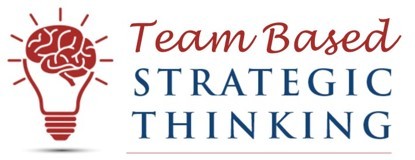Innovation Training Will Not Solve Your Growth & Profitability Issues (#6 Article)
“We need our workforce to be more innovative, we need to think like Apple and Google,” is a common cry resonating from corporate board rooms around the globe as their value propositions rapidly lose their relevance.
Unfortunately, that is about as useful as the football coach telling his team to play harder or the conductor telling her orchestra to sound better. It might have a short-lived motivational effect but does not impart any know-how or skills. That is left to the Learning & Development team who dutifully go out and source the best innovation training there is and then make sure all employees are trained in it.
There are a number of issues with this and why your innovation effort typically fall well short of the ideal. First is a failure to define innovation. I’m going to ask you to ponder this in light of our Chapter 4 discussion. So then what do we mean by “innovation” or “to be innovative”? A simple definition is the connecting of two or more previously unconnected ideas or objects to create something new or novel. It needs to be contrasted with inventions which means to create something that previously didn’t exist before.
I think too often innovation and invention are confused. The classical example is the computer mouse. Douglas Engelbart of the Stanford Research Institute invented the mouse in 1967. Steve Jobs licensed it for his now-infamous Apple LISA personal computer after visiting Xerox PARC in 1979. It eventually found its way onto the Apple Macintosh and the rest is history. That’s innovation.
A more contemporary example is portable music devices. The Mp3 player was an invention, the iPod was an innovation. Just for the record, the above examples are product innovations. Innovation can be about process, technologies, or business models. The critical thing to note is that innovation is by definition incremental and invention is step change. Invention is usually the work of one hardworking genius and innovation of team-based problem solving.
It has become clear that an agile adaptable mindset is a prerequisite for success in a changing world. Organisations are looking for creative resolutions to complex problems. I don’t think that the adoption of innovation training solves these problems. Nor do I think trying to adopt a culture of innovation does either unless you’re Apple or Google. It was Peter Senge in The Fifth Discipline who first described “the learning organisation” as key. A learning organisation has to be collectively adept at creative, critical, and systems thinking if there is any chance of integrating them to find Roger Martin’s “resolution” in a complex world.
It is still with great lament that I see corporations adopting a barrage of innovation training which appears totally unconnected to any overarching strategy except the misplaced belief that being more innovative is better than the alternative. Your disparate approach to innovation may be in fact actually impairing your overall execution strategy as individuals and teams pursue endless rounds of misplaced collaboration and create resolutions to symptoms, not root causes.
The gurus have said you need to be innovative and the L&D people have jumped on the bandwagon. Any of these so-called self-stylised gurus will tell you a vast majority of their process is not too far removed from the next and similar to concepts that have been around since the 1980s.
One of the implications of this is that your competitors are most likely being trained in an innovation process not too dissimilar to your own, especially when it is wrapped up under the guise of design thinking. Don’t get me wrong. Applying innovation and design thinking principles and practices definitely have their place. But they need to be contextualised into your overall business thinking system. As mentioned, this has three fundamental elements: critical thinking, creative thinking, and systems thinking.

